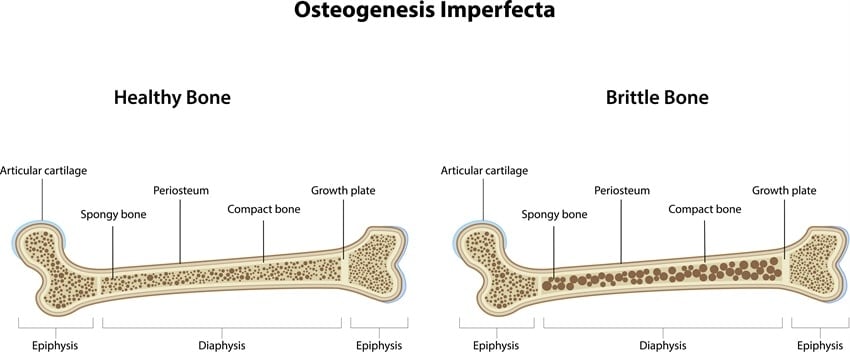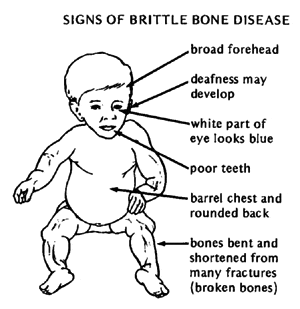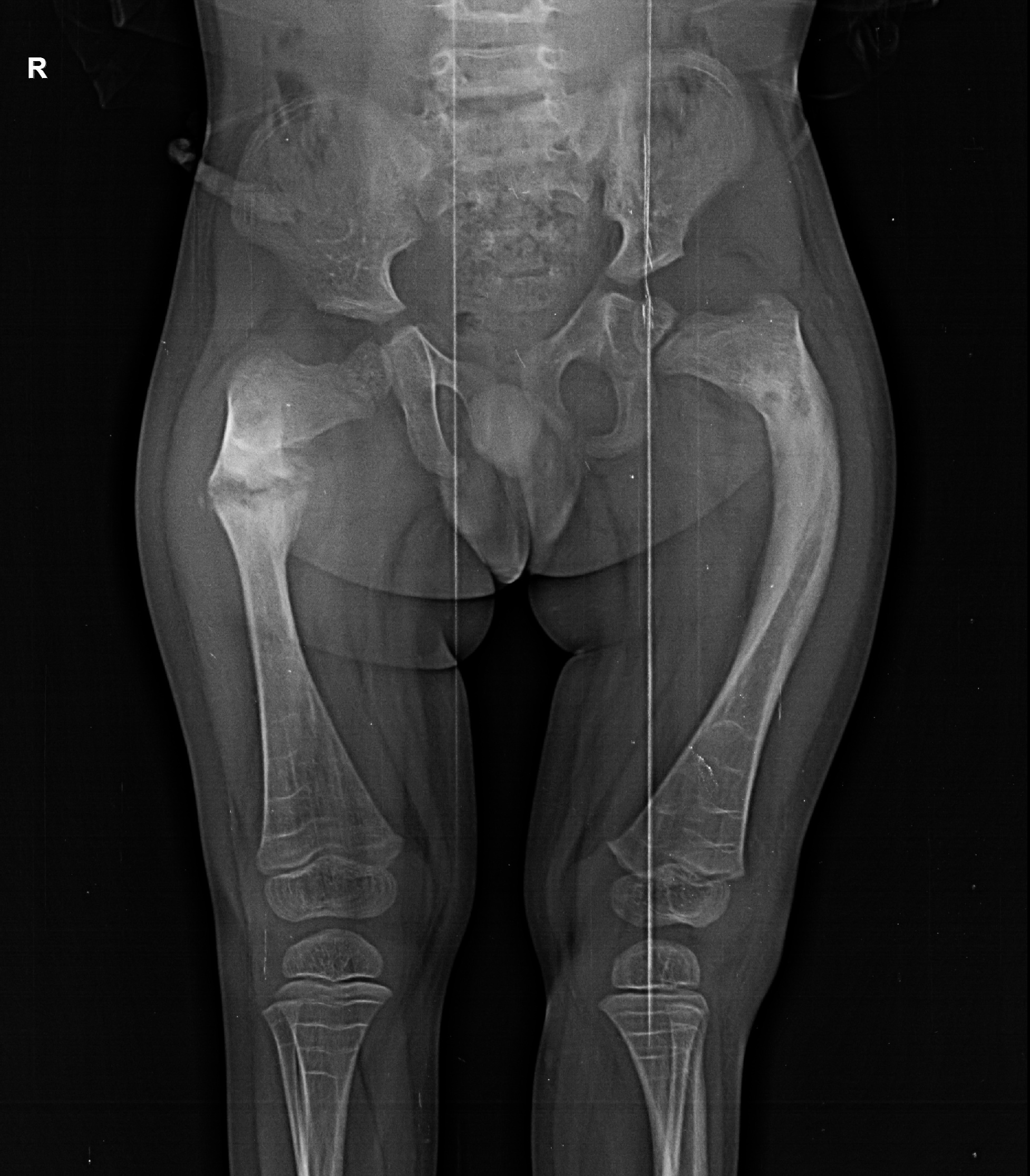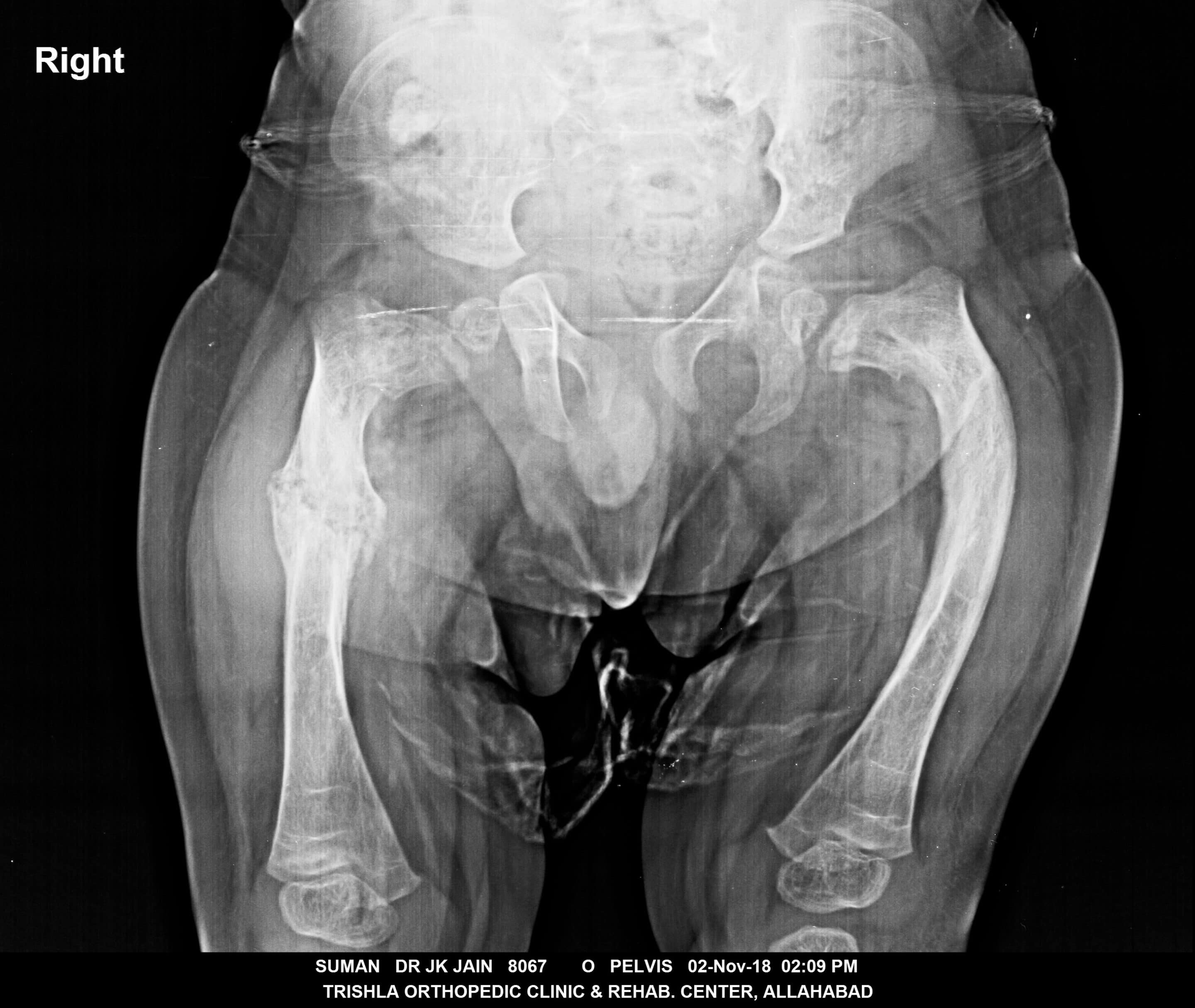Osteogenesis Imperfecta in Children

What is Osteogenesis Imperfecta in children?
- Osteogenesis imperfecta (OI) is a rare genetic disorder in which bone easily fractured with or without any trauma. So it is also known as a brittle bone disease
- It is present since birth.
- Its severity vary.
- Symptom may range from mild to severe and some time it may be lethal.
Causes of Osteogenesis Imperfecta?
- Genetic insult is the cause of this disease. In which one of the genes is the problematic that makes Type 1 Collagen, a protein in body connective tissues. These children will not have sufficient good quality collagen, this will leads to fragile bones that break very easily.
- Type 1 collagen is the most abundant in bone. It forms 90% of the organic mass of bone and tendon. It is also major part of the skin, ligament, cornea and other tissues.
- Severity and variety of OI is depend upon type of gene involvement .
Symptoms of Osteogenesis Imperfecta in children?
Each children will have different set of symptom related with variety of osteogenesis imperfecta.
- Fragile bone that can fracture easily with trivial trauma
- Deformity of bone especially in leg and arm
- Blue sclera
- Curved spine
- Short stature
- Bruise skin
- Hearing loss
- Soft & Discoloration of teeth
- Muscle weakness
Types of Osteogenesis Imperfecta (OI) –
Osteogensis Imperfecta have many variety of presentation. Four main variety are common
Type 1:
This is the most common form of OI & mildest one. In this variety, bone deformity will be very little, but bones can get easily fractured. Sclera can be blue/ purple and teeth abnormality
Type 2:
Most severe form of OI. Very little chance of survival. If survive then multiple fracture. Results from new gene mutation.
Type 3:
Baby with this type often born with fracture, bones fracture very easily. Child will have multiple deformity & can have hearing loss. Poor muscle development in leg and arms. Very small stature.
Type 4:
This is moderately severe. This variety is between type 1 & 3. near normal coloured sclera in eye. Mild to moderate bony deformity.
How is Osteogenesis Imperfecta diagnosed in children?
- Doctor will take detail history of child medical history. They will examine the child.
- Detail examination of teeth, skin, deformity, eye along with h/o fracture will give clue about the diagnosis.
- Detail history of fracture of bone since infancy without much trauma & dis-colouration of sclera in eye can indicate toward the possibility of osteogenesis imperfecta.
- X-ray is the most important investigation as for primary diagnosis is concerned.
- Genetic evaluation may be necessary to confirm the type of OI.
- DEXA Scan can be required to see the bone quality.
Treatment for Osteogenesis Imperfecta?
- There is no cure of osteogenesis imperfecta.
- Treatment is depend upon child symptom, age, general health and severity of symptom & type of OI.
- Treatment are aimed to prevention, treatment of fracture, & correction of deformity etc.
- Rehab measure including brace are being given to make child independent as much as possible.
Bisphosphonate (Medicine):
Bisphosphonate improve bone density so decrease the chances of fracture. It is being given by intravenous rout. It has to be used at regular interval for years under the guidance of experienced doctor. Before giving this injection calcium & vitamin D supplement is necessary..
Plaster cost:
Plaster cost is required to hold the fracture till healing. But we should be careful that plaster should be used in reduced position of fracture otherwise fracture will unite in deform position. Fracture union time is nearly normal in most of the cases.
Orthosis:
light weight orthosis made of polypropylene is required to support the limb during activities so fracture can be prevented.
Exercise:
These children can’t be given prolong bed ridden because with rest bone will be more weaken so light weight bearing exercises are advises to maintain bone quality.
Surgery:
Surgery is required to manage broken bone and to correct the deformity. Bone get usually unite at their normal speed but with deformity. So most of time deformed bone need correction by surgery and fixation by dual Rod system. Paediatric orthopaedic surgeon manage this deformity and recurrent fracture. Growing metal rod is inserted in medullary canal after correction of deformity. It prevent the fracture.
Long term outlook for Osteogenesis Imperfecta in children?
- With advancement of age, incidence of fracture gets reduced. Type 2 OI don’t survive.
- Other variety child will be able to reach adult hood.
- They may need to wear braces and have intramedullary rod for long period.
- These adults should avoid taking medicine like steroid and should not use smoking and drinking.
- Avoiding brisk activities
- Good care and follow up under paediatric orthopaedic surgeon is mandatory for good quality of life.
Complications of osteogenesis imperfecta in a child?
Most common complication of osteogenesis imperfecta in children is the
- Repeated fracture,
- Deformity of bone,
- Hearing loss
- Joint problem
- Vision problem
- Respiratory infection



Frequently Asked Questions
Can you walk with osteogenesis imperfecta?
Few people with Type 1 OI are very mildly affected. Their height is average or above-average. Thus, they can walk but we need to take caution and with strict guidance of pediatric orthopedic surgeon and with proper limb support like wearing brace.
Can brittle bone disease be cured?
There is no complete treatment for brittle bone disease. But the treatment can reduce symptoms, stop the breakage of bones, and maximize movement.
Does osteogenesis imperfecta get worse with age?
Yes, it may get worse as your child gets older but in few variety it may better.
Reviewed and Submitted by Dr. Jitendra Kumar Jain
Last updated on November 27, 2020
Dr.Jitendra Jain, MD and DNB (Orthopedics), president at Trishla Foundation, an NGO for treatment of cerebral palsy, and a Consultant Pediatric Orthopedic Surgeon & Cerebral Palsy Specialist at Trishla Orthopedic Clinic & Rehab Center.
Dr. J. K. Jain is a member of the general council at Dr. SMN university of rehabilitation, Lucknow, a member of the advisory board chief commissioner for PWD, Govt. of India (New Delhi), a member of the state disability research committee (U.P.), and a member of the committee of RCI, New Delhi. He has been awarded many awards, including the Dr.Bhagawan das memorial award, the spirit of humanity award, and the state govt. award for his services towards PWD, etc. Times of India has posted his work many times and mentioned him as one of the best doctors in the field of Pediatric Orthopedics. He helped many children recovering from cerebral palsy, just like comedian jay Chanikara, who is now able to stand and walk without any support, Abena, a Ghana girl with cerebral palsy, and many more. He also organized the National Wheelchair cricket tournament and created World’s first cerebral palsy village foundation in Prayagraj. He successfully treated 10,000+ children with various kinds of orthopedic disability, conducted 160+ free assessment camps, and produced a documentary film on cerebral palsy.
Walk in Appointments Available Daily
You can make an appointment online for video tale-consultation by fixing up an appointment at this website or you can visit the clinic to make an appointment in person and show to doctor with the care of social distancing at the given time.
Contact us
Call Us
0532-2468989
+ 91 9415014994
+ 91 8577873545
+ 91 9455001645
Email Us
totrishlaortho@gmail.com
Our Location
Dr. Jitendra Kumar Jain
Trishla Orthopedic Clinic & Rehab center, 182C / 350A, Tagore Town, Prayagraj (Allahabad) U.P-211002, India
